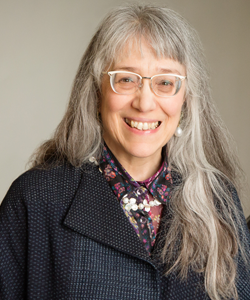Learn more about HRI’s Campus Fellowship Program, which supports a cohort of faculty and graduate students through a year of dedicated research and writing in a collaborative, interdisciplinary environment.
What is unique about your research on this topic?
Starting points often determine the course of a journey, even if its ending is unknown. I began my research on the painter Chen Hongshou (1598-1652) by translating the several hundreds of poems and prose essays that survived in a posthumous collection compiled by his son. Rather than use this material to construct a biography, however, as had already been attempted, I read Chen’s poems as social exchanges among his acquaintances by which he fashioned a multitude of identities—the identity of a painter having been only one among others.
Although my approach to Chen’s writing was innovative in my field at the time, I still questioned why I began with Chen’s words rather than with his paintings and woodblock-printed book illustrations. Encountering in Kyoto a long-lost birthday presentation picture Chen painted in 1649, I understood why I had avoided these paintings: they are difficult; I had trouble understanding them in the context of the art-historical practices I had been taught. The harsh coloring and distorted forms may have put off his first viewers, despite a popular taste for the strange (qi 奇). But what was my problem? Through close looking (or, rather, “good looking,” to borrow Barbara Stafford’s phrase), I came to understand that my desire for coherence and clarity had obstructed my ability to see the eclectic aspect of Chen’s image-making. Now, I embrace the incoherent detail that seems to go against the grain of a picture; I have lost interest in finding a singular meaning behind a picture, the key to its hidden historical significance.
In general, Chen’s work has been understood as alluding to an elusive past, his images described as archaistic and even “primitivist.” Good looking taught me instead that Chen was decidedly modern. Sustained by the media revolution of the late Ming, during which the number of books printed with illustration dramatically increased, Chen appropriated print conventions into his painting. Herein, to my mind, lies the difficulty of his pictures: the juxtaposition of irreconcilable pictorial conventions. Taking a step further, Chen questioned the nature of representation: what is a picture that is composed of contradictory formal units, and where does it stand in relation to its viewers?
I love art history for its challenge to juxtapose word with image, for its invitation to be visually excited and, at the same time, absorbed with intentional writing. My journey has thus come full circle.
What drives your interest in this research?
Because I see my work as an unending experiment, I do not tire of it. Currently, I am working with the history of emotion. This is unsurprising and possibly inevitable, for the literary and visual arts of the late Ming have long been understood to be immersed in feeling (qing 情). But, in general, emotion has been equated with a form of subjectivity that is distinctly European in its significance. What shape will an historical subjectivity of late Ming actors assume? I am eager to see.
